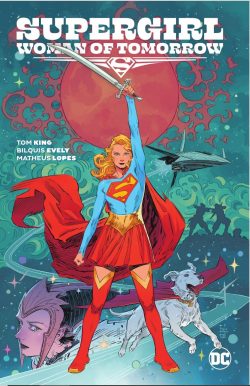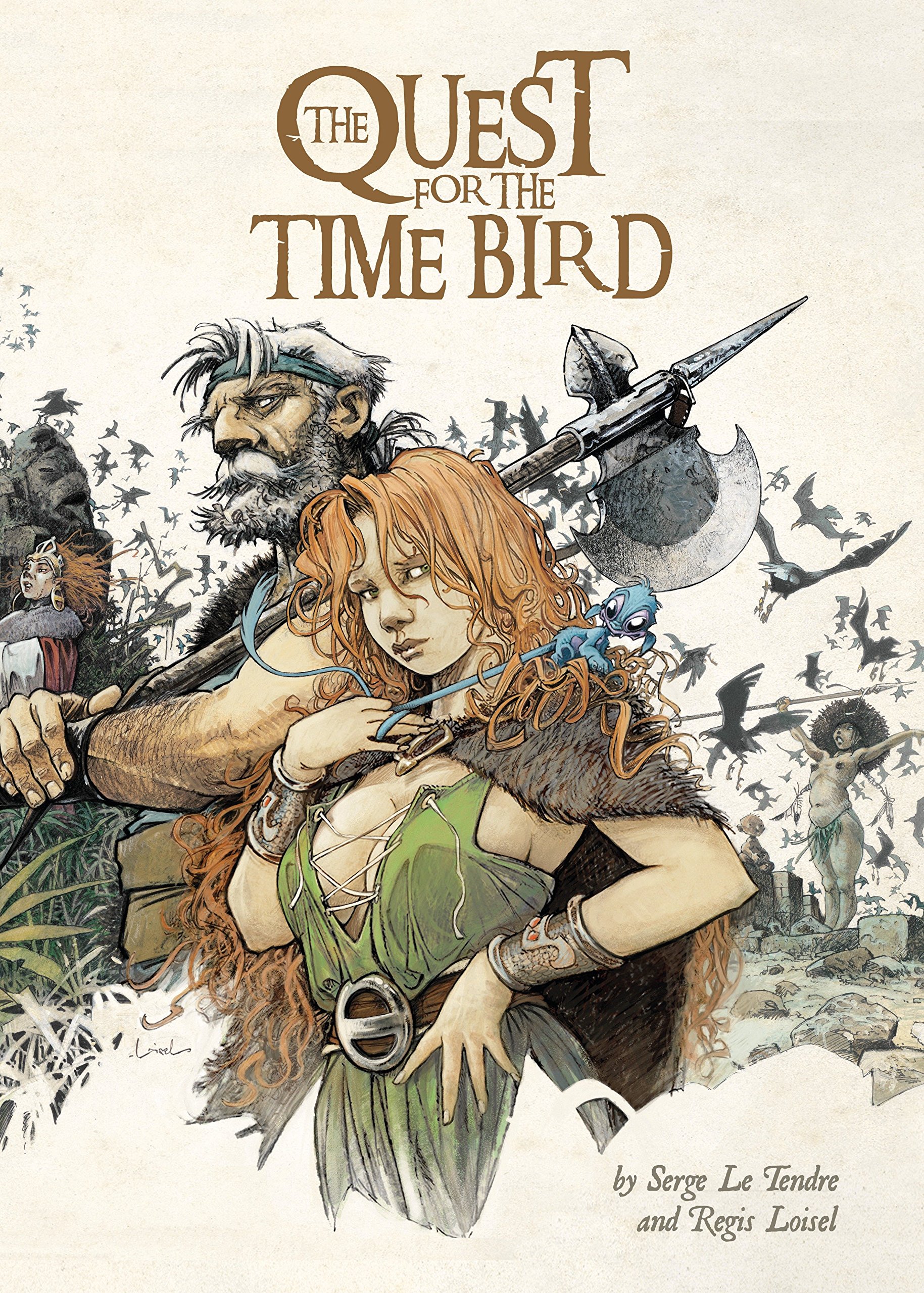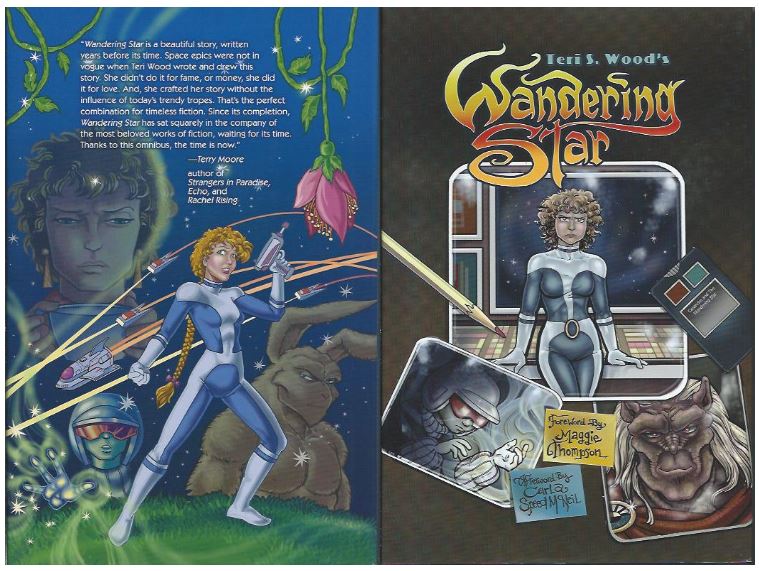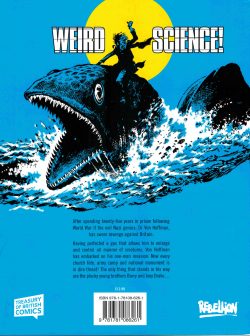

By E. Nelson Bridwell & Don Newton, with Gil Kane, Kurt Schaffenberger, Dave Hunt, Joe Giella ,Bob Smith, Steve Mitchell, Frank Chiaramonte, Dan Adkins, Larry Mahlstedt, John Calnan & various (DC Comics)
ISBN: 978-1-7795-0946-8 (HB/Digital edition)
One of the most venerated and beloved characters in American comics was devised by Bill Parker & Charles Clarence Beck as part of the wave of opportunistic creativity that followed the debut of Superman in 1938. Although there were many similarities in the early years, the Fawcett Comics character moved swiftly and solidly into the realm of light entertainment – and even broad comedy – whilst, as the 1940s progressed the Man of Steel increasingly left whimsy behind in favour of action and drama.
Homeless orphan and thoroughly good kid Billy Batson was selected by an ancient wizard to battle injustice: granted the powers of six gods and mythical heroes. By speaking aloud the mage’s name – an acronym for the six patrons Solomon, Hercules, Atlas, Zeus, Achilles and Mercury – Billy transformed from scrawny boy to brawny adult Captain Marvel.
At the height of his popularity, “the Big Red Cheese” significantly outsold Superman – even being published twice a month. However, as the decade progressed tastes changed and sales slowed. An infamous court case begun in 1941 by National Comics contesting copyright infringement was settled. Like many other superheroes, Cap disappeared, becoming a fond memory for older fans. A big syndication success, he was missed all over the world…
In Britain, where an English reprint line had run for many years, creator/publisher Mick Anglo had an avid audience and no product, and so reimagined the Captain Marvel franchise into atomic age hero Marvelman and Co., continuing to thrill readers well into the 1960s.
Then, as America lived through another superhero boom-&-bust, the 1970s dawned with a shrinking industry and wide variety of comics genres servicing a base that was increasingly founded on collectors and fans rather than casual or impulse buyers. DC Comics needed sales and were prepared to look for them in unlikely places.
Following a 1953 court settlement with Fawcett, DC ultimately secured the rights to Captain Marvel, his spun-off extended Family and attendant strips and characters. Despite the actual name having been taken by Marvel Comics (via a circuitous route and quirky robotic hero published by Carl Burgos and M.F. Publications in 1967), the monolithic publishing home of Superman opted for tapping into that discriminating, if aging, fanbase.
In 1971, they licensed the dormant rights to the character stable (only fully buying them out in 1991) and two years later, riding a wave of national nostalgia on TV and in movies, DC resurrected and relaunched the entire beloved cast in their own kinder, weirder, completely segregated and separate universe.
To circumvent intellectual property clashes, they named the new/old title Shazam! (‘With One Magic Word…’): the unforgettable trigger phrase used by the majority of Marvels to transform to and from mortal form and a word that had entered the American language thanks to the success of the franchise (especially an excellent movie serial) the first time around.
Issue #1 carried a February 1973 cover- date and featured ‘In the Beginning’: relating, in a wittily engaging, grand old self-referential style, the classic origin, after which ‘The World’s Wickedest Plan’ related how the Captain, his super-powered family and all the supporting cast had been trapped in a timeless state for 20 years by the invidious Sivana Family… who had subsequently been trapped in their own Suspendium device too.
I can’t think of any better reason for you to grab the first volume of this series, or the second for that matter…
The series received mixed reviews and unconvincing sales results, but was pushed hard by DC. It even briefly scored the big prize in the publisher’s eyes: being adapted to television as live action Saturday morning series Shazam!, which ran for three season (28 episodes) from September 7th 1974 to October 16th 1976…
The comic book continued until #35, June 1978 before commercial pressures killed it – and many other DC titles. Happily, the series had enough fans – in the marketplace and amongst creators and editors – to be thrown a lifeline…
The stories and milieu had already begun course correction by then. Radical change and darker, “more realistic” adventures had started in Shazam! #33, and more mainstream artists heralded a metamorphosis via action and drama-heavy battles against Nuclear robotic menace Mister Atom, sadistic super-fascist Captain Nazi, murderous primordial “Beastman” King Kull and infernal foe Sabbac…
This third stylish compendium spans cover-dates November 1978 to October 1982, collecting material from World’s Finest Comics #253-270 and 272-282, plus one final fling from Adventure Comics #491-492. Mostly unseen since first release, all the stories were ritten by unsung legend E. Nelson Bridwell, and mostly pencilled by supremely gifted, gone-far-too-soon Don Newton. The latter was born in 1934 and came up through the burgeoning fan press of the 1960s and 1970s. In his too-short career, Newton distinguished himself on The Phantom, The Avengers, The New Gods, Star Hunters, Aquaman and especially Batman, but was clearly at his happiest with Fawcett’s Captain Marvel Family – now and forevermore grouped under the electrical umbrella of Shazam!
Newton was a huge fan of the Captain and his clan, having studied under originator C.C. Beck. The gifted prodigy had been drawing Batman since 1978 and his version was well on the way to being the definitive 1980s look, but Newton’s tragically early death by heart attack in 1984 cut short what would surely have been a superlative and stellar career.
Author Bridwell (Super Friends; Secret Six; Inferior Five; Batman; Superman; The Flash; Legion of Super-Heroes and fill-ins absolutely everywhere) was another devout Captain Marvel acolyte. His day job and secret identity was as editorial assistant/continuity coordinator at DC, where – thanks to an astoundingly encyclopaedic knowledge of publishing minutiae and almost every aspect of history, myth, popular trends and general knowledge plus the ability to instantly recall every damn thing! – he was justly famed as Keeper of Lore and top Continuity Cop.
Bridwell & Newton had just begun collaborating on their dream project when the title was cancelled. Happily, the Shazam Family were moved lock, stock and barrel to experimental giant-sized anthology World’s Finest Comics just as tone and content seamlessly shifted from whimsy to harder-edged contemporary superhero stories.
The wonderment resumes here moments after that final Shazam! issue, wherein King Kull tried to reverse history and re-establish his extinct race and empire. In the rubble-strewn aftermath, WFC #253 opens with ‘The Captain and the King!’ wherein Bridwell, Newton & inker Kurt Schaffenberger recount how Billy, his sister Mary Marvel and their teenage ally Freddy Freeman – AKA Captain Marvel Junior – set off after the brute, blithely unaware that an alliance of the Sivana family and Captain Nazi has faltered.
Despite the fascist now acting on his own, he had inadvertently – and unsuspectedly – gained the power of mind control, and accidentally defeated himself by having the Marvels, science-hero Bulletman and villainous Kull and Sivana attack him…
Meanwhile, wicked Ebeneezer Batson (who had embezzled Billy and Mary’s inheritance) had his soul claimed by Satan, prompting an heroic rescue mission to Hell in #254’s ‘The Devil and Capt. Marvel’, after which Mary takes centre stage as the boys and Bulletman join the enslaved army of irresistible sorcerous seductress ‘Dreamdancer’, leaving only his wife Bulletgirl and the Shazam sister to save the city…
A wry change of pace tinged WFC #256 as the Marvels foil the schemes of a time-travelling swindler in ‘The Gamester’s Death Wager!’, before Billy employs the wisdom of Solomon to defeat ‘The Invincible Man’ threatening Earth – and foiling the masterplan of wicked worm Mister Mind – before backing up Junior when he goes after his Aryan archnemesis.
It’s an extremely personal and delicate case since the lovesick monster has abducted Beautia Sivana (a family black sheep who isn’t evil!): subjecting her to ‘The Courtship of Captain Nazi’. Frankly, she really doesn’t need any help stopping the lech, and the beating CM Junior delivers is just an afterthought…
In these yarns Bridwell assiduously filled in backstory and origins of a world largely unfamiliar to new and younger readers, and for WFC #259 focused on the urbane talking tiger who is the Family’s great ally as a scientist solves ‘The Secret of Mr. Tawny’ and derives an evolutionary process to become futurised, enhanced, all-conquering dictator The Superior …until the Captain and the big cat strike back…
Inked by Dave Hunt, ‘There Goes the Neighborhood!’ deposits a delicious dose of whimsy and contemporary politicking as citizens furiously protest weird strangers moving into their area. The immigrant newcomers are mythologicals – satyrs, centaurs, siren, lamia and mermaids – but even Captain Marvel can’t fight human prejudice and nimbyism …until a geological crisis makes allies of everyone…
Mary flies solo in #261, defeating an old foe by solving ‘The Case of the Runaway Sculpture’, before Billy enjoys a revelatory history lesson after meeting ‘The Captain Marvel of 7,000 B.C.’ and helping set the universe on its true cosmic course whilst Freddy again faces octogenarian outlaws when ‘The Greybeard Gang’ unleash a taste of the bad old days…
Fawcett invented big fight stories and multi-part serial epics at the dawn of the Golden Age and for World’s Finest Comics #264 Bridwell, Newton & Hunt celebrated the tradition with Mister Mind getting his old gang back together. ‘The Monster Society Strikes Back!’ sees the alien worm, Sivana, Mr. Atom, King Kull, IBAC (combining the awesome “Evil” of Ivan the Terrible, Borgia, Attila and Caligula in one weedy nerd with his own acronymic magic word), Oggar (“World’s Mightiest Immortal”) and evil antithesis Black Adam united in a scheme to kill the hero kids and conquer everything.
First to strike are Oggar and Adam, but their resurrected Egyptian armies are no match for Mary and Billy, and the focus falls on the human-hating beastman and atomic automaton who trigger ‘The Plot Against the Human Race’ (inked by Frank Chiaramonte) but just can’t outsmart Billy and Freddy…
Joe Giella applied his classical inking to WFC #266’s as murderous mystic malcontent IBAC joins ‘Sivana’s Space Armada’, recruiting aliens from everywhere to attack Earth, yet once again failing to get past mighty Captain Marvel. Bob Smith then inked #267’s concluding chapter as the ghastly gang regroup to perpetrate an ‘Assault on the Rock of Eternity!’, sparking the return of part-timers The Three Lieutenant Marvels to help save creation…
Like Philip Jose Farmer, Bridwell was one of those creators who always sought links between heroes and villains, and he indulged himself via a trick of fortuitous continuity in #268’s ‘A Sleep and the Deep’ (Steve Mitchell inks) as Freddy Freeman’s origins were re-examined via some very nasty nightmares…
In brief: Captain Marvel Jr. and his originating antithesis Captain Nazi sprang out of a crossover experiment in 1942, starting in the Bulletman feature of Master Comics. The Ballistic Wonder was undoubtedly Fawcett’s runner-up attraction: hogging the cover spot there and even winning his own solo comic book. That all changed with #21 and Captain Nazi. Hitler’s unholy Übermensch made manifest, the monstrous villain was despatched to America to spread terror and destruction and kill all its superheroes.
Nazi stormed in, battling Bulletman and Captain Marvel, who naturally united to stop the Fascist Fiend razing New York City. The clash ended inconclusively and restarted in the Captain Marvel portion of Whiz Comics #25 with the Nazi trying to wreck a hydroelectric dam. Foiled again, he sought to smash a fighter plane prototype.
Captain Marvel countered him, but was not quick enough to prevent the Hun killing an old man and brutally crushing the young boy beside him. Freddy Freeman seemed destined to follow his grandfather into eternity, but guilt-plagued Billy brought the dying lad to Shazam and the wizard saved his life by granting him access to the power of the ancient gods and heroes. Physically cured – except for a permanently maimed leg – the process generated a secondary effect: whenever he uttered the phrase “Captain Marvel” Freeman transformed into a super-powered version of his mortal self.
The epic concluded in Master Comics #22 when the teen titan joined the Bullets in stopping Captain Nazi, victoriously concluding with a bold announcement that from the very next issue he would be starring in his own solo adventures…
In our modern age, the net result was that Freddy experienced a portentous dread that the seas which had taken all his family had not done with him and something evil was coming…
Before that though, Bridwell, Newton & Dan Adkins reveal how composite demon host Timothy Karnes (carrying infernal icons Satan, Any, Belial, Beelzebub, Asmodeus & Craeteis) is revealed as the cruel cause of those nightmares in #269’s ‘SABBAC Strikes Back!’ but is unable to survive when CMJ deduces the plot and turns the tables…
It’s smiles all around – eventually – when Billy’s alter ego convinces hideous extraterrestrials to take back their well-meaning gift of transforming his landlady’s offspring into ‘Our Son, the Monster!’ (Larry Mahlstedt inks) whilst Mary Marvel confronts a deadly new foe in #272. As inked by Mitchell, ‘Chain Lightning’ can divert and absorb the magic bolts that bestow godlike power, but she can’t think as quickly as the Shazam girl…
Adkins returned for #273 as the World’s Wickedest Scientist writhes in shame after being awarded ‘Sivana’s Nobel!’ for the discarded and despised benevolent devices he invented before turning evil. To restore his own pride, the batty boffin tries to trigger World War III, but thanks to Captain Marvel only makes himself eligible for next year’s Peace Prize…
Billy Batson steals the show next, solving a baffling murder mystery in the Mahlstedt inked ‘Silence, Please’ and Adkins embellishes a compelling kidnap drama as the Marvel family seek a temporary replacement following ‘The Snatching of Billy Batson!’
Inked by Chiaramonte, weird war and magical mystery inform WFC’s #276 pan-dimensional invasion saga, but the last stand of ‘Magicians and Mercenaries’ – and the Marvel Family – proves but a simple prelude to Junior tackling ‘The Menace of the Moon-Tree!’ when fairy tales come true and magic beans link Earth to Luna…
A glimmer of understanding comes in #278 as satanist Dora Keane accepts ‘The Power of Darkness!’ from Satan, and as Darkling defeats the Shazam- powered champions. Saved by another enigmatic magical manifestation, the heroes are set on the trail of an unknown operator acting anonymously from the shadows…
His identity is revealed in #279 as a ruthless plutocrat blackmails the world into finding a cure for his fatal illness, or else ‘When Bancroft Fisher Dies, Everybody Dies!’…
As the Marvels race to find the global boobytrap endangering life on Earth, they are assisted by beings impossible to believe or comprehend and a boy Freddy recognises…
The truth emerges in ‘The Secret of the Freeman Brothers!’ and the return of Kid Eternity…
Way back in Shazam! #27, Bridwell had revived a Quality Comics character DC had also acquired when the Golden Age ended. The ghostly child and his spiritual advisor (that’s a pun, sons & daughters) fitted perfectly into what Silver Age fans dubbed Earth-S continuity, despite previously only being seen in reprint tales…
Devised by Otto Binder & Sheldon Moldoff, the Kid had debuted in Hit Comics #25 (cover-dated December 1942): an innocent boy machine-gunned by Nazis on a U-Boat, and taken to the heavenly realm of Eternity by a hapless soul collector years before his actual due date. Bureaucracy being the ultimate force of Creation, the lad was unable to simply return to life, but was granted compensation in the ability to temporarily walk the Earth, and power to summon any person, myth or legend from literature or history.
Aided by bumbling but beneficent spirit Mr. Keeper, the Kid fought crime and injustice until all the really good Golden-Age comic books were cancelled, but now was revealed as Freddy’s brother Christopher “Kit” Freeman, who had died on the same day Freddy had been attacked by Captain Nazi and both grandfathers had been killed…
As the boys compare origins it’s revealed that Mr. Keeper’s original mistake was taking Kit instead of Freddy and that the wizard was deeply involved in setting the situation right…
Having at last made contact with his sibling and saving Earth from mystic menaces, Kid and Junior are at the forefront of the next crisis as Mister Mind steals ultimate power in #281 to become ‘The One-Worm Monster Society!’ (John Calnan inks). Once that catastrophe cataclysmically concluded, the spooks silently stuck around, helping scupper the schemes of con artists Silk and Her Highness in the final World’s Finest outing.
Illustrated by Gil Kane, ‘Charity Begins…’ (#282 August 1982) was set in a circus and featured everyone – even charismatic charlatan/honorary Marvel Uncle Dudley – but was not the intended last hurrah. That had been delayed and only appeared in DC Digest-series Adventure Comics #491 & 492 (September and October 1982, illustrated by Newton, Chiaramonte & Calnan).
It began with ‘The Confederation of Hell’ as Satan assembled former failed agents IBAC, Darkling, SABBAC and old Kid Eternity enemy Master Man who attacked the heroes in their human forms, and unleashed primordial deities to do their dirty work. However, with Kit and Keeper turning the tide the Marvels easily won their ‘Battle with the Gods!’ to fade safely into comics limbo until the next reboot…
Although still controversial amongst older fans like me, the 1970’s incarnation of Captain Marvel/Shazam! has a tremendous amount going for it. Gloriously free of breast-beating angst and agony (even at the end) these adventures are beautifully, compellingly illustrated and charmingly scripted: clever, rewarding, funny and wholesome superhero yarns to appeal to any child and positively promote a love of graphic narrative. There’s a horrible dearth of exuberant superhero adventure these days, so isn’t it great that there is still somewhere to go for a little light action?
Just say the word…
© 1978, 1979, 1980, 1981, 1982, 2021 DC Comics. All Rights Reserved.














